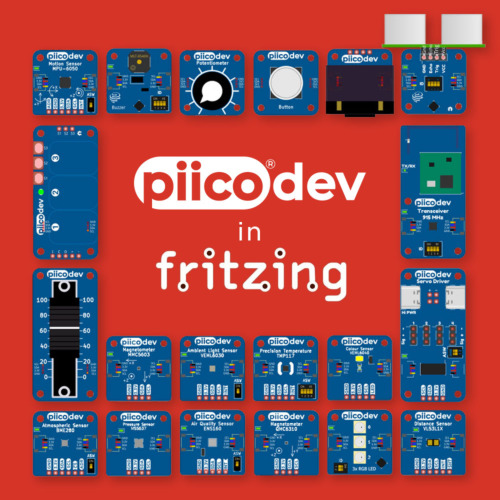Adafruit 12-Channel 16-bit PWM LED Driver - SPI Interface - TLC59711
In stock, ships same business day if ordered before 2PM
Delivered by Tue, 6th of Jan
Quantity Discounts:
- 10+ $12.04 (exc GST)
- 50+ $11.79 (exc GST)
For all of you out there who want to control 12 channels of PWM, Adafruit salute you! They also would like you to check out this breakout board for the TLC59711 PWM driver chip. This chip can control 12 separate channels of 16-bit PWM output. This is the highest-resolution PWM board We've seen! Designed (and ideal) for precision LED control, this board is not good for driving servos. If you need to drive servos, Adafruit have a controller for that over here.
Only two "SPI" pins are required to send data (our Arduino library shows how to to use any digital microcontroller pins). Best of all, the design is completely chainable. As long as there's enough power for all the boards you can chain as many as you'd like, like a little trail of blue PCBs stretching out into the sunset. Each of the 12 outputs are constant-current and open drain. You can drive multiple LEDs in series, with a V+ anode supply of up to 17V. If you want to drive something that requires a digital input, you must use a pullup resistor from the drive pin to your logic level to create the full waveform.
One resistor is used to set the current for each of the outputs, the constant current means that the LED brightness doesn't vary if the power supply dips. Adafruit use a 3.3K resistor for about 15mA but you can solder a thru-hole resistor over it if you'd like to change that value. Check the TLC59711 datasheet for details on resistor-to-current values. There's also a handy on-chip 3.3V regulator which you can use if you need a logic level regulator.
Adafruit include a few extras to make this board easy to use: a green power-good LED, four mounting holes and a current-set resistor. A bit of 0.1" header is also included so you can solder it on and plug into a breadboard.
To use: Power V+ with 5-17VDC, and connect ground to the common ground. Then send 3-5V logic SPI data on DIN (data in) and CLK (clock). Adafruit's Arduino library will get you started with blinking LEDs, install it and run the example code with the noted pin configuration.
There's a typo in the silkscreen, the second R0 should be R1 - but you knew that already!
Adafruit 12-Channel 16-bit PWM LED Driver - SPI Interface (6:37)
Technical Details
- Dimensions: 22.75mm / 0.89" x 28.38mm / 1.1" x 3mm / 0.1"
- Weight: 2.13g
- TLC59711 datasheet, schematics, and Fritzing Library available in the product tutorial
Exact shipping can be calculated on the view cart page (no login required).
Products that weigh more than 0.5 KG may cost more than what's shown (for example, test equipment, machines, >500mL liquids, etc).
We deliver Australia-wide with these options (depends on the final destination - you can get a quote on the view cart page):
- $3+ for Stamped Mail (typically 10+ business days, not tracked, only available on selected small items)
- $7+ for Standard Post (typically 6+ business days, tracked)
- $11+ for Express Post (typically 2+ business days, tracked)
- Pickup - Free! Only available to customers who live in the Newcastle region (must order online and only pickup after we email to notify you the order is ready). Orders placed after 2PM may not be ready until the following business day.
Non-metro addresses in WA, NT, SA & TAS can take 2+ days in addition to the above information.
Some batteries (such as LiPo) can't be shipped by Air. During checkout, Express Post and International Methods will not be an option if you have that type of battery in your shopping cart.
International Orders - the following rates are for New Zealand and will vary for other countries:
- $12+ for Pack and Track (3+ days, tracked)
- $16+ for Express International (2-5 days, tracked)
If you order lots of gear, the postage amount will increase based on the weight of your order.
Our physical address (here's a PDF which includes other key business details):
40 Aruma Place
Cardiff
NSW, 2285
Australia
Take a look at our customer service page if you have other questions such as "do we do purchase orders" (yes!) or "are prices GST inclusive" (yes they are!). We're here to help - get in touch with us to talk shop.
Have a product question? We're here to help!
Guides
The Maker Revolution
Projects
Pico-Dog Motion Activated Audio Alarm
WaveJumper: Music Sample Slicer on a Breadboard
PiicoDev Ecosystem In Fritzing
Makers love reviews as much as you do, please follow this link to review the products you have purchased.


















Product Comments